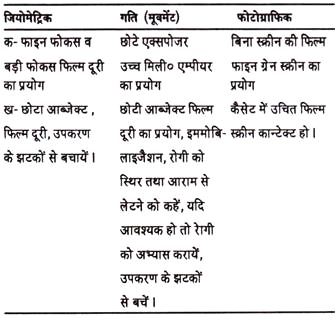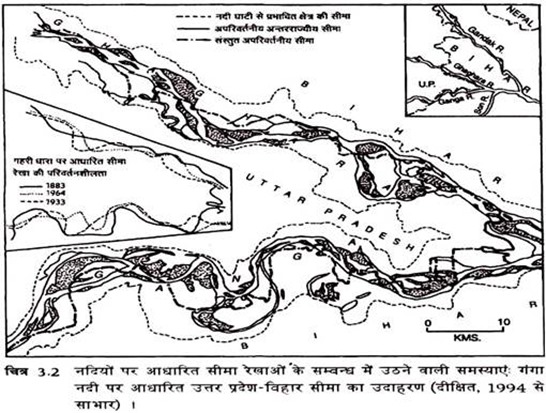In this design the experimental material is divided into groups, each of which is subjected to a single trial or replication. The object is to keep the experimental errors as small as possible at all stages of the experiment. Then, when the units assigned to the successive groups, all units which go in the same group should be closely comparable.
It is also necessary that uniform technique should be applied for all units in the same group. If any change in technique is essential which may affect the results should be done between groups. The divisions should be made in such away as may help to minimize experimental errors.
The randomized block design is a design in which there are n = experimental units arranged in r blocks or replicates of h units in such a way that the experimental units within each block are relatively homogeneous and that the number of experimental units h within a block is equal to the number of treatments being investigated.
In this experiment the number of blocks ‘must be equal to the number of replications fixed for each treatment, and the number of plots in each block should be equal to the number of treatments. The shape of the blocks (in agricultural experiment) may be either rectangular or square by which block areas can be made as compact as possible.
ADVERTISEMENTS:
Randomization of Treatments and Layout:
The treatments are assigned to the units (plots) within each group (block) entirely at random with the help of random number.
One of the possible layouts of 4 treatments t1, t2 t3 and t4 with 5 replicates may be shown as below:
Analysis:
ADVERTISEMENTS:
Once the experiment is performed, the observations are arranged in the form of two way classification.
Then analysis is done as two way classification following the usual notations:
Advantages and disadvantages (RBD versus CRD):
ADVERTISEMENTS:
The main difference, between CRD and RBD is found in the method of assigning the treatments to experimental units.
The advantages of RBD are given below:
(i) It is quite flexible.
(ii) It is applicable to a moderate number of treatments. Any number of treatments and any number of replications may be used with a restriction that the number of replications is equal to the number of blocks. If extra replication is necessary for some treatments, these may be applied to more than one unit (but to the same number) per block.
(iii) The analysis is straight forward even in case of missing values.
(iv) It also enables us to use different techniques to different blocks, though the technique should be same within the blocks.
(v) By making blocks the variation between the blocks are eliminated from that of the error variance and thus experimental error is reduced, which is an improvement over the CRD.
(vi) In agricultural experiments it can be used equally well in a rectangular, square or a field of any shape.
Due to its advantages, we shall not use other complicated designs, if the results of RBD are satisfactory.
The main disadvantages of RBD are given below:
(i) If the blocks are not relatively more homogeneous, then a large error term will result.
(ii) If the number of treatments is large, then the size of the block will increase which usually may result in introduction heterogeneity within blocks and thus experimental error may be increased.
(iii) We cannot use different replications for different treatments.
(iv) Sometimes, in case of missing data, partitioning of treatment sum of squares becomes impossible,
(v) If the experimental material is homogeneous, then RBD sacrifices degrees of freedom with no compensation return and thus the use of RBD is worthless if all the units are homogeneous.
Applications:
(i) In agricultural experiments, this design is used when the fertility gradient is in one direction.
(ii) This design can be used where it is desired to control one source of variation as its use is regarding, if the units vary greatly with respect to source of variation but can be grouped into fairly homogeneous groups.
However, this design is considered the back bone of the science of experimental design owing to the presence of validity, simplicity and flexibility.
Example:
The following is the layout and yield in kg., of 4 varieties of wheat in 4 blocks:
 Perform an analysis of this data and inter pre your result.
Perform an analysis of this data and inter pre your result.
Solution:
First of all arrange the data in two-way classification form:
Conclusions:
(i) Since the calculated value of F for blocks is less than table value at 1 % level with 3 and 9 d. f. H is accepted at 1% level of significance i.e., the block means are not significantly different at 1% level.
(ii) Since calculated F for varieties is much higher than tabulated value of F, we reject. H02 i.e., the treatment (verity) means are highly significant.
Application of T-test:
Since the treatment means arc highly significant, in order to investigate which of the treatment pairs differ significantly, we compute the S.E. of difference of treatment means and the critical difference as follows:
Remark 1:
The non-significance of the difference between block means is an indication that blocking is worthless.
Remark 2:
The significance of the block means is an indication that there is a gain from blocking if on treating a design as completely randomized gives a non-significant treatment means.





